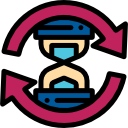
Building Confidence for a Successful Career Shift
Chosen theme: Building Confidence for a Successful Career Shift. Step into a fresh chapter with practical tools, heartfelt stories, and clear steps that help you trust your strengths, speak your value, and move decisively toward meaningful change.
Reframing Your Professional Story
When Maya left hospitality for UX design, she feared being seen as an outsider. By mapping guest-experience insights to user research, she realized her strengths already lived in the new field.


Transferable Skills Map
List ten accomplishments, then extract the repeatable skills behind them—analysis, facilitation, writing, stakeholder management. Draw lines to target role requirements to prove your existing foundation is far stronger than you imagine.

Micro-Wins Logbook
Track daily progress: one outreach message, one page of notes, one solved problem. Small visible wins compound, nudging your identity from tentative explorer to credible contributor who consistently follows through.

Evidence Folder
Collect emails, screenshots, metrics, and testimonials. When doubts surface, review concrete proof of value. Evidence quiets impostor feelings and supplies crisp bullets for resumes, portfolios, interviews, and networking introductions.
Mindset Tools for Brave Transitions
Confidence Triggers
Create a pre-action ritual: a deep breath, a power posture, and a written intention. Pair it with a cue—calendar alerts or a sticky note—to reliably anchor courage before key conversations.
Fear-Setting vs. Goal-Setting
Define worst-case scenarios, prevention steps, and repair plans. Naming risks shrinks them. Then specify best-case benefits and the cost of inaction, so progress feels safer and more compelling than staying stuck.
Self-Compassion Routines
Talk to yourself like you would to a friend. Replace “I failed” with “I learned.” Research shows self-compassion increases persistence, making it easier to take the next courageous step tomorrow.
Networking Without the Nerves
Ask, “What problems are you solving this quarter?” and “What skills make someone effective on your team?” Curiosity turns pressure into discovery and helps you tailor your value to real needs.
Networking Without the Nerves
Leverage acquaintances and alumni. Research on weak ties shows they often spark opportunities. Send concise, respectful requests explaining your pivot, target role, and one specific question to make responses easy.


Learning Plans That Actually Stick
Choose one cornerstone skill, one project, and one mentor. Set weekly outputs, not just hours. By day ninety, ship a portfolio artifact that clearly shows your new value in action.
Learning Plans That Actually Stick
Break skills into parts, practice at the edge of ability, seek fast feedback, and iterate. Confidence appears when you can see your improvement curve becoming steeper and more predictable.
Learning Plans That Actually Stick
Certificates signal interest; portfolios prove impact. Replace passive course stacking with shipped artifacts—case studies, demos, or analyses—so hiring managers and peers can trust what you can already deliver.

Bridge Statements
Open with, “Here’s how my previous experience directly serves your goals.” Tie two or three transferable strengths to the role’s top priorities so interviewers instantly see fit despite the shift.

Story Structure: STAR+Learning
Use Situation, Task, Action, Result, then add Learning. The learning shows adaptability—exactly what hiring teams seek in career shifters navigating new contexts and evolving responsibilities with steady confidence.
